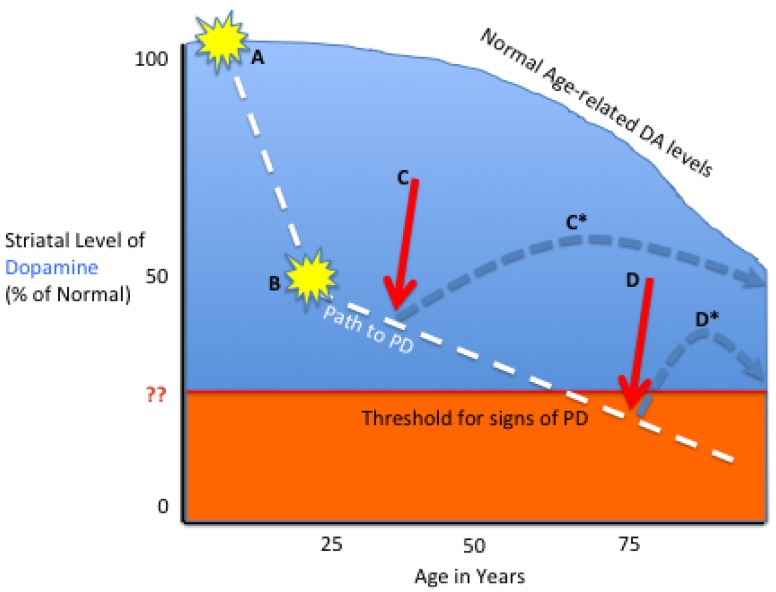Figure 3.
Schematic of Future Gene Therapy Options in PD. Normal aging is associated with gradual reduction in striatal DA, associated with reduced numbers of SNc dopaminergic neurons. Despite this age-related DA reduction, most individuals do not achieve a threshold level of dopamine depletion during life, and do not develop PD. In PD patients, however, hereditary (A) and/or environmental (B) factors/events lead to a more drastic DA depletion (Path to PD) that crosses the PD threshold and results in clinical signs. The slopes from A to B and in the Path to PD are variable. In cases of early PD, preferably before clinical signs are evident, GFL gene therapy (C) may protect from further nigrostriatal neuronal loss and restore near-normal DA levels (C*) for the patient’s life. In patients with symptomatic PD, use of AADC or AADC+ gene therapy (D), has the potential to increase striatal levels of dopamine above the threshold (D*) and restore more normal motor function.

